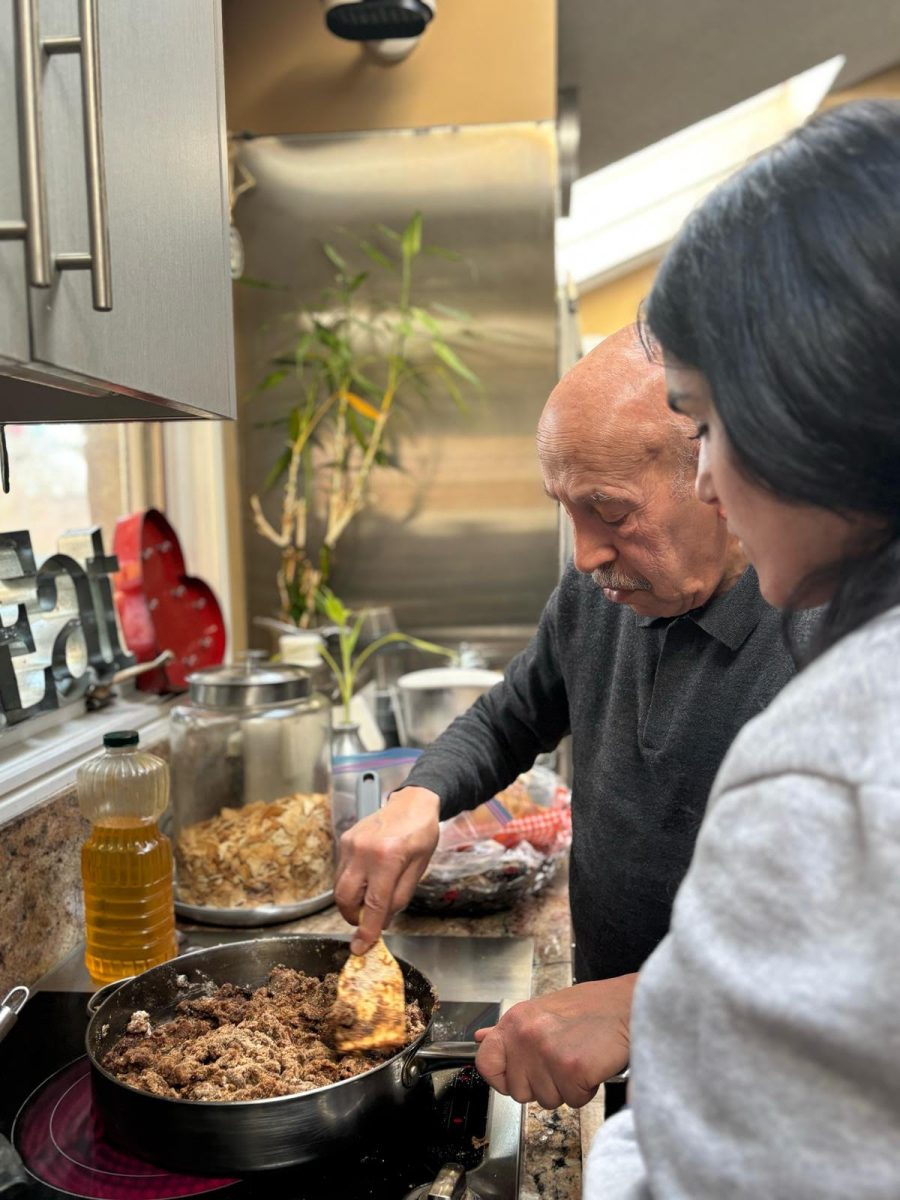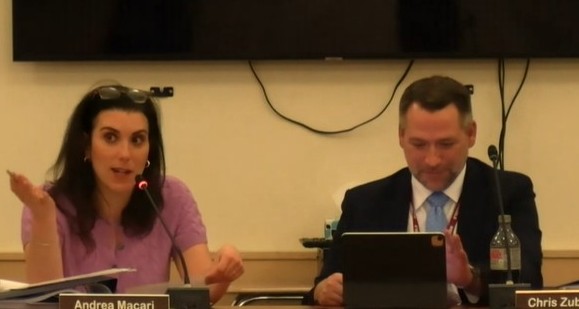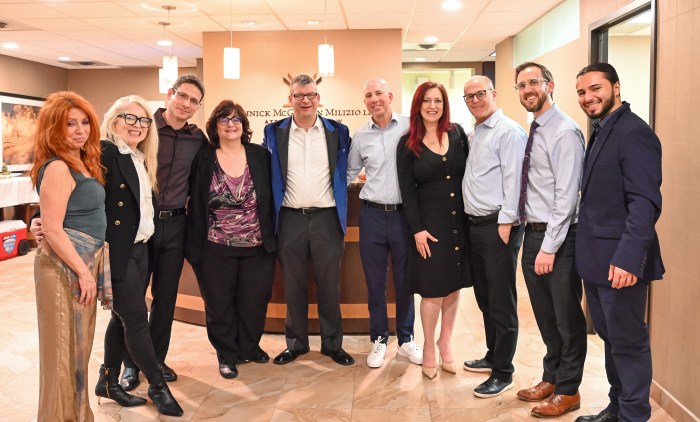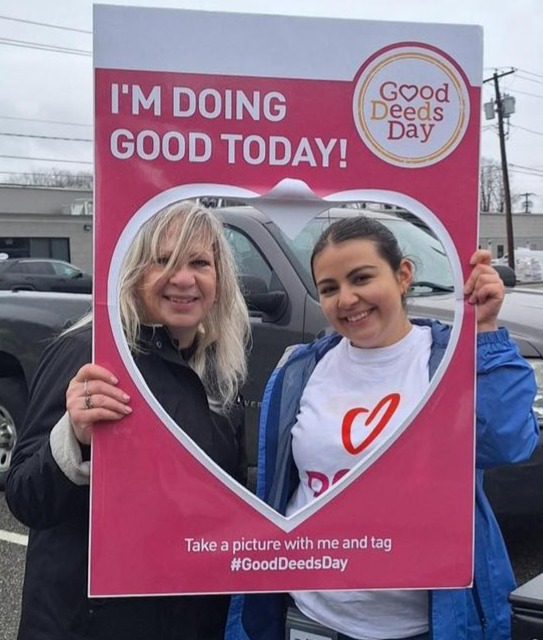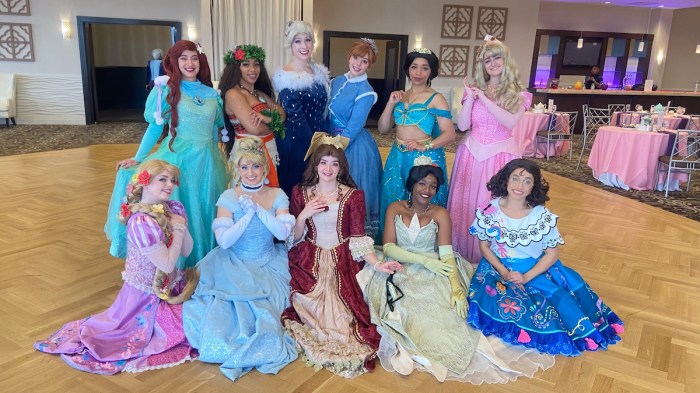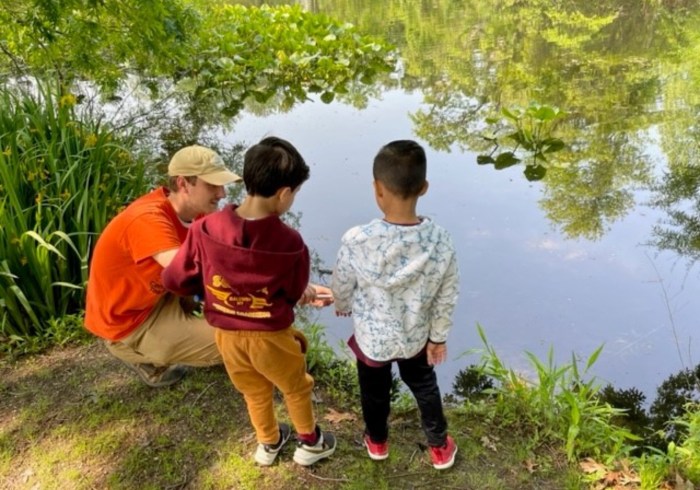As the Jewish holidays of Purim and Nowruz approach, the kitchens of many Persian families come alive with the delicious aromas of a beloved tradition: halva.
For the Sassouni family, this sweet treat holds a deep connection to both their heritage and family history. The recipe for their halva, a special dessert, has been passed down through four generations. It has become a symbol of the cultural pride and religious significance of these annual celebrations.
Rebecca Yousefzadeh Sassouni, a community leader and attorney in Great Neck, is deeply connected to the tradition of making halva in her family.
“This recipe is from Kashan, where both my mother and father are from,” she said, referring to the region in Iran famous for its culinary traditions. “My grandmother started making this halva; my father continued the tradition and now, I carry it on with my children.” For Sassouni, preparing the halva is not just about following a recipe—it’s about preserving a cherished part of her family’s cultural identity.
The origins of halva date back to ancient times. In the Torah, the word “halva” refers to an offering made of flour and oil, presented to the priests as part of sacrificial rituals.
Over the centuries, the meaning of halva evolved, with various cultures developing their versions of the dish. In Persia, halva became a staple of celebrations, with different types of halva being made for both joyous and somber occasions. Some varieties are made from rice, while others, like the version Sassouni’s family prepares, are flour-based.
For Purim, a holiday commemorating the bravery of Queen Esther, halva is a special treat, often enjoyed during the festive meals. Purim is one of the most joyous celebrations in the Jewish calendar, marked by costumes, feasting and the giving of gifts.
According to Sassouni, “Purim is when we get together as a family to make the halva. It’s a chance to pass down this tradition and to honor our heritage.”
She points out that, unlike the more commercialized versions of halva that can be found in stores, her family’s recipe is rooted in the practices of Kashan Jews, who have made this sweet treat for generations.

Sassouni’s halva is a blend of simple ingredients, but it requires careful attention and patience. The process begins with roasting flour in oil until it reaches a golden brown color, filling the kitchen with a warm, toasty scent.
“The dates we use are not the typical store-bought ones,” Sassouni noted. “Medjool dates come from the Middle East and they’re very different—darker and more flavorful.” The dates are pitted, then sautéed with oil and once they soften, sugar is added, along with ground cardamom, rose water and coriander seeds for an added spice. The result is a smooth, rich dessert that’s both sweet and aromatic, with a hint of warmth from the cardamom and the floral notes of the rose water.
For Sassouni, making halva is a communal activity, a bonding experience that brings her family together every year.
“I remember making it with my grandmother when I was a little girl,” she said with a smile. “Now, my own children come into the kitchen to help. We all pitch in and it’s a fun way to preserve this part of our tradition.” She emphasizes how important it is for her to share these customs with the next generation. “My children enjoy it and they’re learning something valuable about where they come from.”
The significance of halva extends beyond just Purim—it is also a key part of the Nowruz, the Persian New Year. Nowruz is a time of renewal and reflection, marked by special foods, decorations and rituals. Halva is often served during the Nowruz celebrations, symbolizing prosperity and sweetness in the year to come.
“Esther, from the Purim story, is a Persian Jew,” Sassouni said. “Her story is not just central to Purim—it’s also connected to Persian culture. So, for me, making halva for both Purim and Nowruz is a way to celebrate both my Jewish and Persian heritage at the same time.” This dual celebration of cultural pride and religious significance is what makes halva a particularly special dish in Sassouni’s home.

Sassouni’s family continues to honor these traditions with pride and her father, David, is a key figure in passing on the recipe.
“My father is very traditional, but he never imposed his customs on us,” Sassouni said. “We begged him to teach us how to make the halva and he was happy to pass it down. He is the one who insists on doing it the way it’s been done for generations and I’m so grateful for that.”
This sense of respect for the past and family is evident in the way the Sassounis approach their traditions.
“It’s not just about making the halva—it’s about coming together as a family to honor the people who came before us,” Sassouni said.
As Purim and Nowruz approach, Sassouni is already looking forward to the next opportunity to gather in the kitchen with her children.
“It’s something I make sure we do every year,” she said. “Even though I’m busy with work and other responsibilities, this tradition is non-negotiable. It’s a way of staying connected to our roots and each other.”
For the Sassouni family, halva is more than just a sweet treat—it’s a tangible link to the past, a symbol of family, faith and the enduring power of cultural heritage.
Sassouni’s commitment to preserving this tradition and sharing it with her family is a testament to the importance of food in connecting generations.
“I hope that my children will continue to make halva for their own families,” she said. “And I hope that they’ll remember the warmth of our kitchen, the joy of making this sweet treat together and the love that we put into it every year.”




